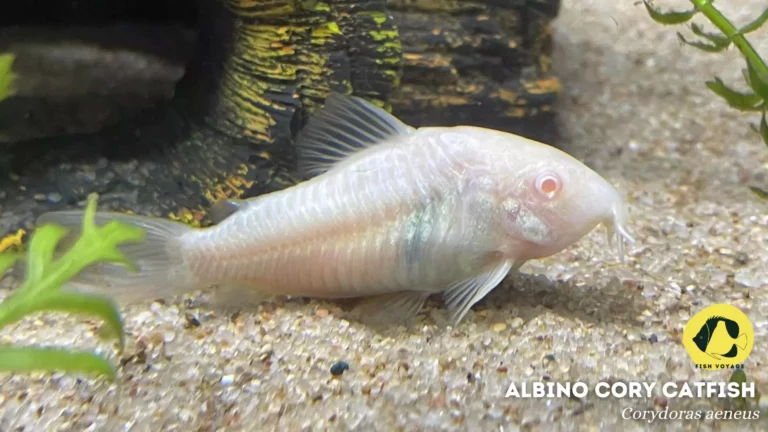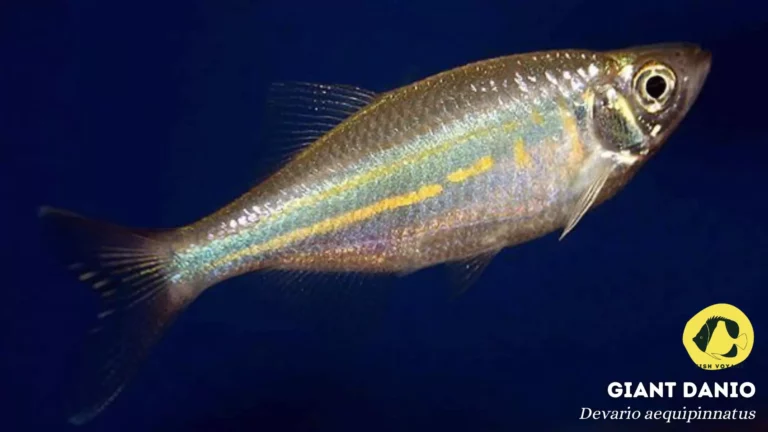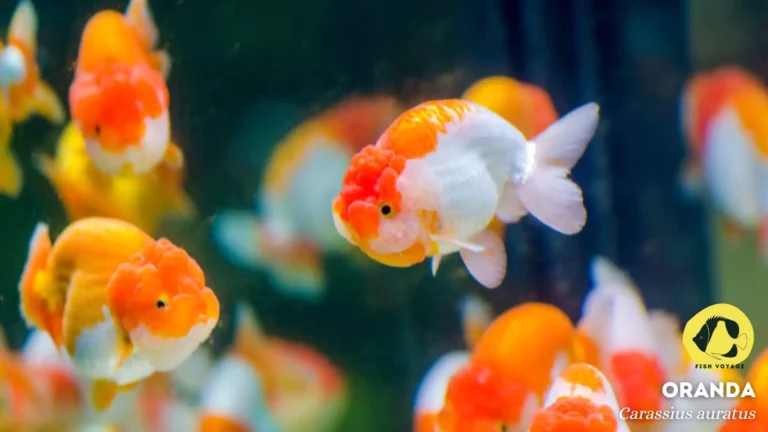The Ultimate Guide to Pygmy Corydoras Size

Pygmy Corydoras, scientifically known as Corydoras pygmaeus, are diminutive freshwater catfish renowned for their charming demeanor and vibrant appearance. With their small size and endearing personalities, these miniature aquatic companions have captured the hearts of aquarium enthusiasts worldwide. Residing in the rivers of South America, Pygmy Corydoras are distinguished by their distinctive patterns and playful behavior, making them a popular choice for aquarium hobbyists seeking captivating aquatic additions.
Appreciating the significance of Pygmy Corydoras size is paramount for ensuring their well-being in captivity. Knowledge of their average dimensions and growth stages is pivotal in creating an environment that accommodates their specific needs. From tank size considerations to crafting suitable feeding regimens, understanding the nuances of their size is a foundational aspect of responsible and compassionate care. This blog post delves into the intricacies of Pygmy Corydoras size, offering insights that empower enthusiasts to provide optimal conditions for the flourishing of these delightful aquatic companions.
Pygmy Corydoras Size: An Overview
Average Size of Pygmy Corydoras
- Adult Dimensions: Pygmy Corydoras typically reach an average size of 1 to 1.2 inches (2.5 to 3 centimeters). Their petite stature adds to their appeal, making them a favorite among aquarists looking to populate smaller aquarium setups.
- Sexual Dimorphism: Males and females may exhibit subtle size differences, with females often being slightly larger. Understanding these distinctions aids in identifying and appreciating the natural variations within a group.
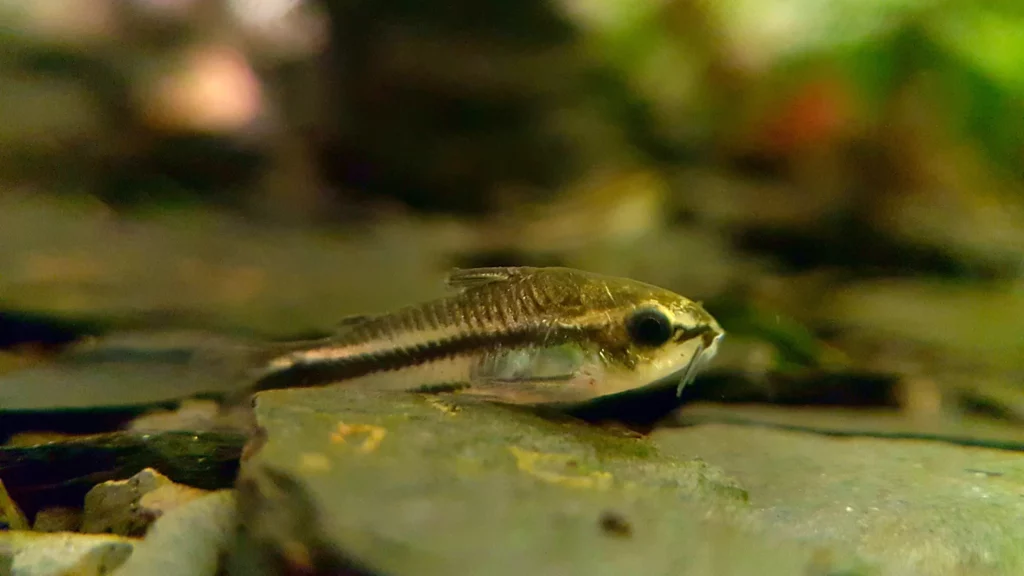
Growth Stages and Variations in Size
- Juvenile to Adult Transition: Pygmy Corydoras undergo distinct growth stages from their juvenile phase to adulthood. Monitoring these transitions is crucial for gauging their overall health and adapting care practices accordingly.
- Individual Variability: While there are general size expectations, individual variations exist within a population. Factors such as genetics and health can influence the growth trajectory of each Pygmy Corydoras, resulting in unique sizes even among siblings.
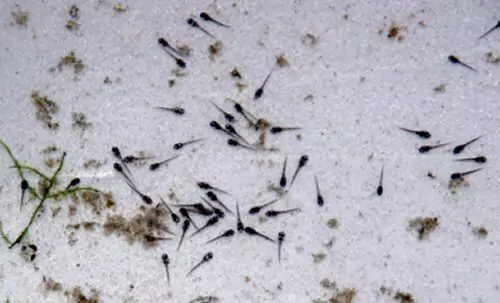
Factors Influencing Their Size
- Genetic Predispositions: The genetic makeup of Pygmy Corydoras plays a fundamental role in determining their ultimate size. Selective breeding efforts may influence certain traits, contributing to variations in size among different lineages.
- Environmental Impact: The aquarium environment significantly influences the growth of Pygmy Corydoras. Adequate space, water quality, and a balanced diet contribute to their overall well-being and, consequently, impact their size. This section explores the delicate balance between genetics and environmental factors, shedding light on how conscientious care can positively influence size outcomes.
This comprehensive overview not only outlines the basic dimensions of Pygmy Corydoras but also delves into the dynamic aspects of their growth stages and the multifaceted factors shaping their size, providing aquarists with a holistic understanding of these captivating aquatic companions.
Importance of Knowing Pygmy Corydoras Size
Tank Suitability Considerations
Minimum Tank Size Recommendations
- Space for Natural Behavior: Recognizing the compact size of Pygmy Corydoras is paramount in determining the appropriate tank size. A minimum tank size of 10 gallons is recommended to allow these small catfish sufficient space for natural behaviors, exploration, and social interactions.
- Maintaining Water Quality: Adequate tank size facilitates effective filtration and maintenance of water parameters, ensuring a stable and healthy aquatic environment for Pygmy Corydoras.
Compatibility with Other Fish
- Peaceful Community Dwellers: Due to their peaceful nature, Pygmy Corydoras thrive in community aquariums. Understanding their size is essential when selecting tankmates to prevent potential conflicts or predation. This section explores suitable companions, considering both size and temperament, to create a harmonious aquatic community.
Feeding Requirements Based on Size
- Appropriate Diet Proportions: Pygmy Corydoras have specific dietary needs corresponding to their size. Tailoring feeding regimens to accommodate their small mouths and nutritional requirements ensures optimal health. This includes offering a varied diet of high-quality sinking pellets, live or frozen foods, and ensuring proper portion control.
Breeding Considerations Related to Size
- Selecting Breeding Pairs: Knowledge of the size and maturity of Pygmy Corydoras is crucial for successful breeding endeavors. This section explores the identification of sexually mature individuals, ensuring that breeding pairs are well-matched in size. Additionally, it addresses the creation of an environment conducive to breeding, taking into account the size-related intricacies of their reproductive behaviors.
Understanding the importance of Pygmy Corydoras size extends beyond mere dimensions, influencing tank setup, community dynamics, feeding practices, and breeding success. By delving into these considerations, aquarists can provide attentive care tailored to the specific needs of these charming aquatic companions.
Measuring and Observing Pygmy Corydoras
Techniques for Accurately Measuring Their Size
Proper Measurement Tools
- Use of a Caliper: Accurate measurements begin with the right tools. A caliper provides precise readings, ensuring reliable data for tracking Pygmy Corydoras size over time.
- Submersion Method: Given their small size, measuring Pygmy Corydoras in a water-filled container helps account for any curvature or bending in their bodies, offering a more accurate representation of their size.
Observing Growth Over Time
- Regular Monitoring: Consistent measurement intervals, especially during key growth stages, allow aquarists to track the progress of Pygmy Corydoras. This practice aids in identifying potential anomalies and ensures timely adjustments to care routines.
Signs of a Healthy-Sized Pygmy Corydoras
- Energetic Behavior: A healthy-sized Pygmy Corydoras exhibits lively and explorative behavior. Active swimming, engagement with tankmates, and the absence of lethargy are indicators of a well-adjusted and appropriately sized individual.
- Proper Body Proportions: Observing the fish’s overall body structure helps in assessing its health. A healthy Pygmy Corydoras maintains well-proportioned fins, scales, and body contours, reflecting optimal growth and development.
Common Size-Related Health Issues to Watch For
Stunted Growth
- Causes and Prevention: Stunted growth can result from poor nutrition, inadequate tank size, or stressful environments. This section explores preventative measures and corrective actions to address stunted growth and promote healthier development.
Obesity and Overfeeding
- Balanced Nutrition: Overfeeding can lead to obesity, impacting the overall health of Pygmy Corydoras. Guidance on appropriate feeding practices, portion control, and a well-balanced diet helps mitigate the risks associated with excess food consumption.
Infections and Parasites
- Size-Related Vulnerabilities: Smaller fish may be more susceptible to infections and parasites. Recognizing signs of illness, implementing quarantine measures, and consulting with a vet are crucial aspects of maintaining the health of Pygmy Corydoras.
Understanding how to accurately measure, observe, and interpret the size of Pygmy Corydoras contributes to their overall well-being. By combining precision in measurement techniques with a keen eye for signs of health, aquarists can proactively address size-related issues and provide the best possible care for these delightful aquatic companions.
Tips for Size Management
Proper Feeding Practices
Balanced and Varied Diet
- Nutritional Requirements: Ensuring Pygmy Corydoras receive a balanced and varied diet is crucial for their overall health and size development. High-quality sinking pellets, supplemented with live or frozen foods, cater to their dietary needs and support optimal growth.
Portion Control
- Preventing Overfeeding: Controlling portion sizes helps prevent issues such as obesity and digestive problems. Careful observation of feeding behaviors and adjusting portion sizes based on individual needs contribute to maintaining a healthy size.
Ideal Tank Conditions for Optimal Growth
Adequate Space
- Size-Appropriate Tank: Providing an aquarium with sufficient space is essential for Pygmy Corydoras to exhibit natural behaviors and thrive. A larger tank minimizes stress, promotes exploration, and supports the development of a healthy size.
Water Quality Maintenance
- Optimal Conditions: Consistent water quality management is imperative for the well-being and growth of Pygmy Corydoras. Regular water changes, proper filtration, and monitoring key parameters contribute to a stable environment conducive to optimal growth.
Monitoring and Adjusting Care Routines Based on Size Changes
Regular Size Assessments
- Scheduled Measurements: Implementing regular size assessments through accurate measurement techniques helps track growth patterns. Any deviations from expected growth can prompt adjustments to care routines.
Flexibility in Care Practices
- Adapting to Changing Needs: Recognizing that the size of Pygmy Corydoras may change over time, it’s important to remain flexible in care practices. This includes modifying feeding schedules, adjusting tank setups, or addressing health concerns based on observed size changes.
Consulting with Experts
- Professional Guidance: Seeking advice from experienced aquarists or consulting with veterinary professionals can provide valuable insights into size management. Expert opinions contribute to informed decision-making and tailored care for Pygmy Corydoras.
These practical tips for size management empower aquarists to proactively address the needs of Pygmy Corydoras throughout their growth stages. By focusing on proper feeding practices, creating an ideal tank environment, and adapting care routines based on observed size changes, enthusiasts can foster the well-being and longevity of these captivating aquatic companions.
Conclusion
Recap of Key Points
- Size Variability: The discussion highlighted the average size of Pygmy Corydoras, acknowledging the inherent variability within the species.
- Growth Stages: Understanding the growth stages and variations in size is essential for comprehensive care.
- Factors Influencing Size: Genetic predispositions and environmental factors were explored as key contributors to the size of Pygmy Corydoras.
Emphasis on the Importance of Size-Aware Care
- Foundational to Well-Being: The blog post underscored the significance of size-aware care as a foundational aspect of responsible and compassionate stewardship. Recognizing the impact of size on tank suitability, feeding practices, breeding success, and overall health is paramount for ensuring the well-being of Pygmy Corydoras.
- Empowering Aquarists: By providing insights into accurate measurement techniques, signs of health, and proactive size management tips, the blog aims to empower aquarists with the knowledge needed to foster a thriving and appropriately sized Pygmy Corydoras community.
In conclusion, embracing a size-aware approach to Pygmy Corydoras care enhances the overall experience of keeping these enchanting aquatic companions. The journey from understanding their average size to implementing size-conscious practices contributes to the joy of aquarium keeping while prioritizing the health and happiness of Pygmy Corydoras.
Additional Resources
Links to Reputable Forums
Engaging in discussions with fellow enthusiasts can provide valuable insights and shared experiences. Explore reputable forums such as AquariumAdvice and Fishlore to connect with a knowledgeable community dedicated to aquarium care. Participating in these forums allows for the exchange of ideas, troubleshooting, and the sharing of best practices for Pygmy Corydoras enthusiasts.
Recommended Products
- Hikari Tropical Micro Pellets: These small, nutrient-rich pellets are designed to meet the dietary needs of Pygmy Corydoras. Their slow-sinking nature allows fish to feed comfortably at the bottom of the tank.
- API Freshwater Master Test Kit: Ensuring optimal water conditions is vital for Pygmy Corydoras. This comprehensive test kit enables regular monitoring of key parameters, including pH, ammonia, nitrite, and nitrate.
- Fluval Driftwood: Providing hiding spots and natural decor enhances the well-being of Pygmy Corydoras. Fluval Driftwood not only adds aesthetic appeal but also serves as a functional element in creating a comfortable habitat.
- CaribSea Eco-Complete Substrate: This substrate is designed to be gentle on the barbels of bottom-dwelling fish like Pygmy Corydoras. Its composition supports a natural, bacteria-rich environment.
- Aqueon QuietFlow E Internal Power Filter: Pygmy Corydoras prefer subdued water flow. This adjustable filter allows for customization, ensuring a gentle and suitable water current for these small catfish.
Frequently Asked Questions (FAQs)
1. What is the average size of Pygmy Corydoras?
Pygmy Corydoras typically reach an average size of 1 to 1.2 inches (2.5 to 3 centimeters). However, individual fish may exhibit slight size variations.
2. Do Pygmy Corydoras have size differences between males and females?
Yes, there may be subtle size differences between male and female Pygmy Corydoras, with females often being slightly larger. Monitoring these distinctions aids in identifying and appreciating the natural variations within a group.
3. How fast do Pygmy Corydoras grow from juveniles to adults?
The growth rate of Pygmy Corydoras varies, but they typically undergo significant growth from juveniles to adults within a few months. Providing a well-balanced diet and suitable tank conditions supports healthy development.
4. Can Pygmy Corydoras be kept in small aquariums due to their size?
While Pygmy Corydoras are small in size, it’s essential to provide them with adequate space. A minimum tank size of 10 gallons is recommended to allow for natural behaviors, social interactions, and optimal growth.
5. Are there specific signs that indicate a healthy-sized Pygmy Corydoras?
Yes, a healthy-sized Pygmy Corydoras exhibits energetic behavior, including active swimming and interaction with tankmates. Additionally, proper body proportions, such as well-formed fins and scales, are indicative of optimal growth and well-being.


